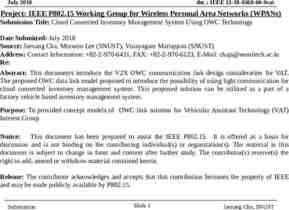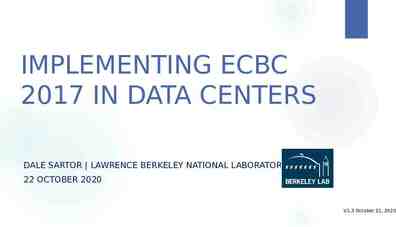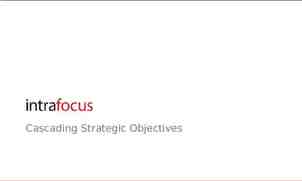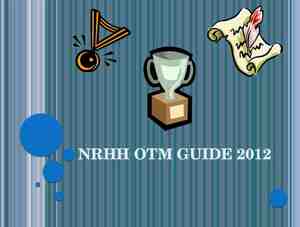UofM Kellogg Eye Center OR Turnover Analysis (Final) Team 10:
25 Slides1.32 MB

UofM Kellogg Eye Center OR Turnover Analysis (Final) Team 10: Jake Gordon, Adrian Rey, Andrew Teague Date: Tuesday, December 10th, 2019 Submitted To: Dr. Phillip Lieu; Client; Kellogg Medical Director Beth Hansemann; Coordinator; CI Specialist Jonathan Lee; Coordinator; CI Specialist Dr. Mark Van Oyen; Professor; IOE 481 Ms. Mary Lind; Professor; IOE 481 2019 Fall Project 10

Introductio n

KEC Operating Room Location University of Michigan Kellogg Eye Center Leading eye care center in USA Conducts roughly 3,000 cataract surgeries annually Focus Pure cataract surgery turnover in the OR Goal Reduce turnover time between consecutive cataract surgeries to increase daily capacity of patients treated Contaminated Surgical Equipment Discarded OR Sterilization Surgical Equipment Prepared Turnover Processes

Overview

Background Context KEC OR has seen increased demand for pure cataract surgeries Current system Low standardization of procedures Outdated pager communications system Redundant operations Key Issues Increasing turnover times Competition from other eye centers Errors due to miscommunication

Goals and Objectives Goal Improve turnover time for pure cataract surgeries in KEC OR Objectives 1. Address Current Communications System Improve intergroup communication Eliminate communication gaps 2. Address Operational Inefficiencies Identify operational issues Provide and standardize best practices during turnover

Design Process & Alternative s

Engineering Challenges 1. Understanding task lead and process times 2. Understanding dependencies of each task 3. Validating the process o Conflicting information provided 4. Finding efficient strategies for each task

Literature Search 1. Ankeet Bhat from University of Connecticut School of Medicine o More efficient internal communications, standards on when to call nurse 2. Dan Krupka and Shashikant Sathaye from Twin Peaks Group o Ways to reduce turnover and mitigate turnover delay risks 3. Winter 2019 Team o Quick deep-dive into project and turnover process

Initial Data Collection Methods Gather Historical Data Winter 2019 Student Report Staff Interviews Time Studies Direct Observations

Initial Data Analysis and Findings: Historical Data and Time Studies Analysis: - Historical data verifies validity of time studies - Largest turnover delay caused by low coordination between OR set-up and CRNA wheeling patient in - Caused by pager system

Initial Data Analysis and Findings: Observations and Staff Interviews Scrub nurses rarely get helped during turnover Partially attributed to ineffective communications Step by step standardization of cleaning processes ineffective in reducing turnover Why? Inherent variability of patient requirements, surgeon preferences, and staff availability Scrub Nurses already know what needs to be done they just need help to do it quicker

Design Requirements, Constraints and Standards Requirements Reduce Turnover Time Replicable Resource Efficient Reduce Turnover Variance Constraints No shift scheduling No surgery scheduling Cannot alter key tasks Standards HIPAA OSHA UMPNC AORN MLearning

Preliminary Alternatives Option 1: Current System Option 2: Partial Standardization Walkie-Talkies not implemented Walkie-Talkies assigned by room and to relevant No standardized communication procedures KEC groups Standardized communication only for primary opportunities Option 3: Complete Standardization Walkie-Talkies assigned by room and to relevant KEC groups Standardized communication for all identified opportunities during and outside of turnover

Pugh Selection Matrix Our recommendation: Partial Standardization

WalkieTalkie Testing

Walkie-Talkie Testing Details 7 turnovers observed Walkie-Talkie Rules and Standards Guide Communications Performed 1. Circulating Nurse to PTs, 5 minutes before patient out 2. Circulating Nurse to CRNA, 2 minutes before “room ready” Time studies performed (7 turnovers) 3. Patient out to patient in 4. 2-minute warning to patient in

Quantitative Analysis of Testing Analysis: - Circulating Nurse to PT communication highly effective - Circulating Nurse to CRNA communication ineffective

Feedback from Testing Circulating Nurse and Scrub Nurse Feedback: - Easy to use - Helpful in facilitating fast turnovers CRNA Feedback: - Ineffective for their responsibilities - Annoying to carry in addition to other devices (pager)

Conclusion and Recommendati ons

Conclusion We recommend partial standardization. That includes: Channel Assignments a) Channels 1-6: Circ/CRNA in OR 1-6 b) Channel 7: PeriOperative Techs (PT) Primary Opportunities a) Pre-surgery completion: Circ to PT b) Room Ready: Circ to CRNA

Recommendations: Walkie-Talkie Management A complex system requires maintenance and upkeep. We propose: Smaller walkie-talkies Assign an owner responsible for: Monitors data collection Train staff on procedure/any changes Manages usage and maintenance Updates system as necessary Feedback system Anonymous feedback box in common area Interview staff for their input Visual progress board

Recommendations: Expanding Communication Two key recommendations for expanding communication: 1. Incorporate Pharmacy Safety precaution Turnover delay prevention 2. Incorporate Pre-Op Ensure patient ready for surgery Bridge communication gap

Recommendations: Additional Opportunities We recommend performing “Best Practices” whenever possible. Scrub primes machine first Circulating Nurse brings back patient with CRNA Potential opportunities to further help turnover: Explore economic feasibility of “pick packs” Install digital clock to monitor turnover in real time

Thank You!






